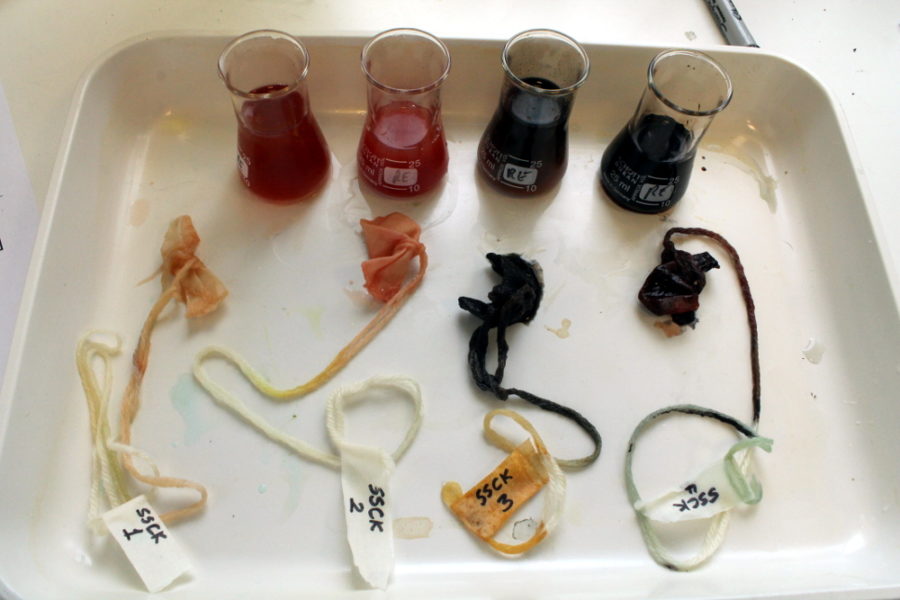ASCUS, Edinburgh
2016
Dr. Ryan Lewis
1. Preparing Cotton for dying
Cleansed of natural oils and wax, natural cotton and string was labelled and immersed in 70°C bath of a choice of 4 mordants for 30mins:
a. water
b. copper solution
c. iron solution
d. aluminium sulphate
These ‘mordants’ help to bind dyes to the cotton and string.
2. Preparing natural materials for use as dyes
a. 4g of natural materials (ground as much as (possible)
b. They were placed in a vessel and 50 ml ‘extraction’ solution with different ph values were chosen and added to the natural materials.
c. They were ‘heat extracted’ by placing in the microwave for 3mins or 70°C bath for 20mins.
image ref sample 1. Avocado stone, aluminium sulphate, ph 9.5
image ref sample 2. Pomegranate rind, iron solution, ph 2
image ref sample 3. Pomegranate rind-fine, iron solution, ph 4.5
image ref sample 4. Avocado rind, copper solution, ph 12
3. Dying Cotton
a. Filter extracted dye with a piece of muslin in a funnel filter the dyes into a clean vessel.
b. Wash cotton and string samples and place in dye vessel
c. Heat samples in the water bath for 30mins.
d. Wash and dry samples after 30mins.
Colours and intensity varied- samples could have been left longer in stage 3. A natural / chemical ‘fixative’ could be applied.
